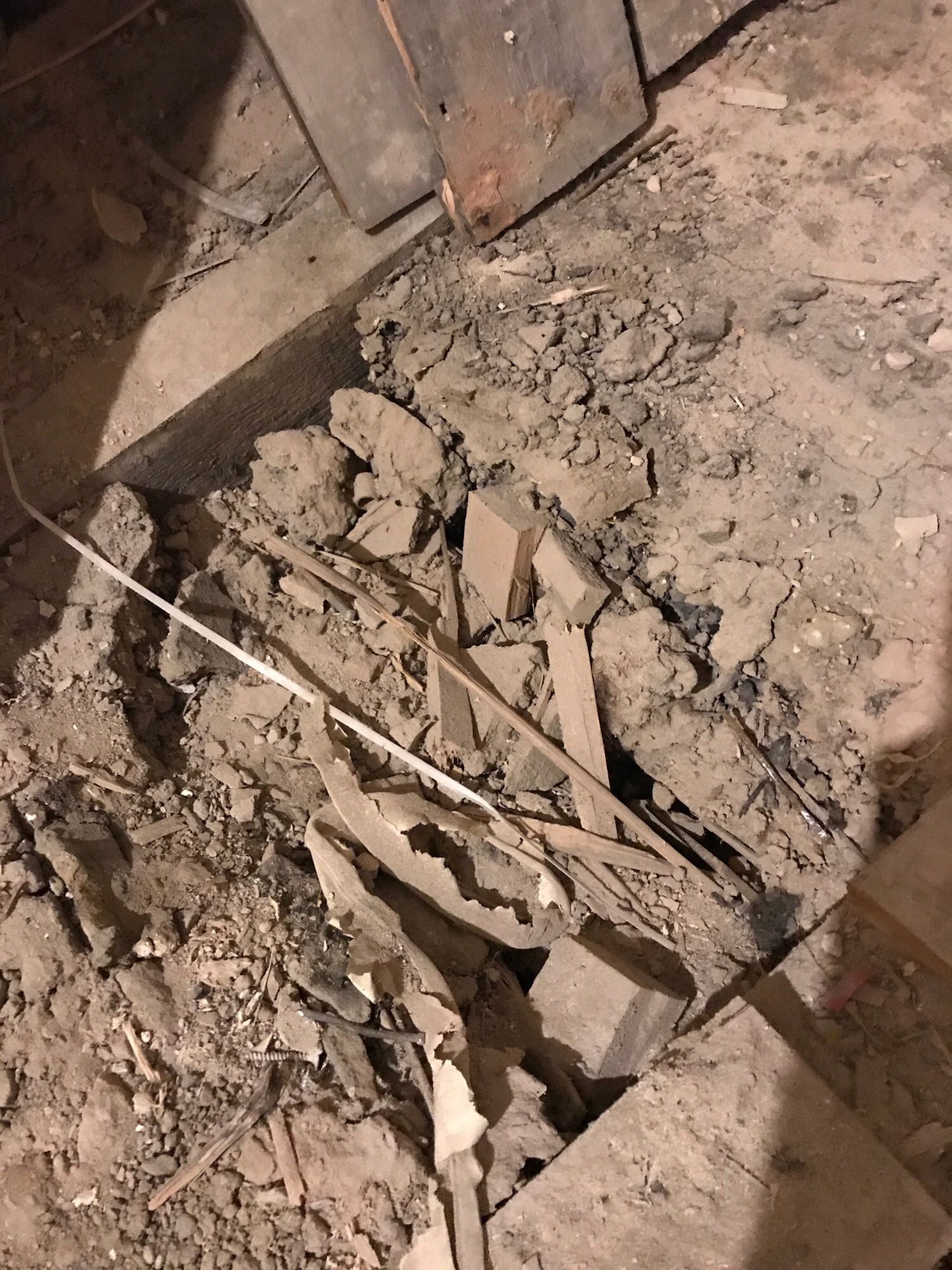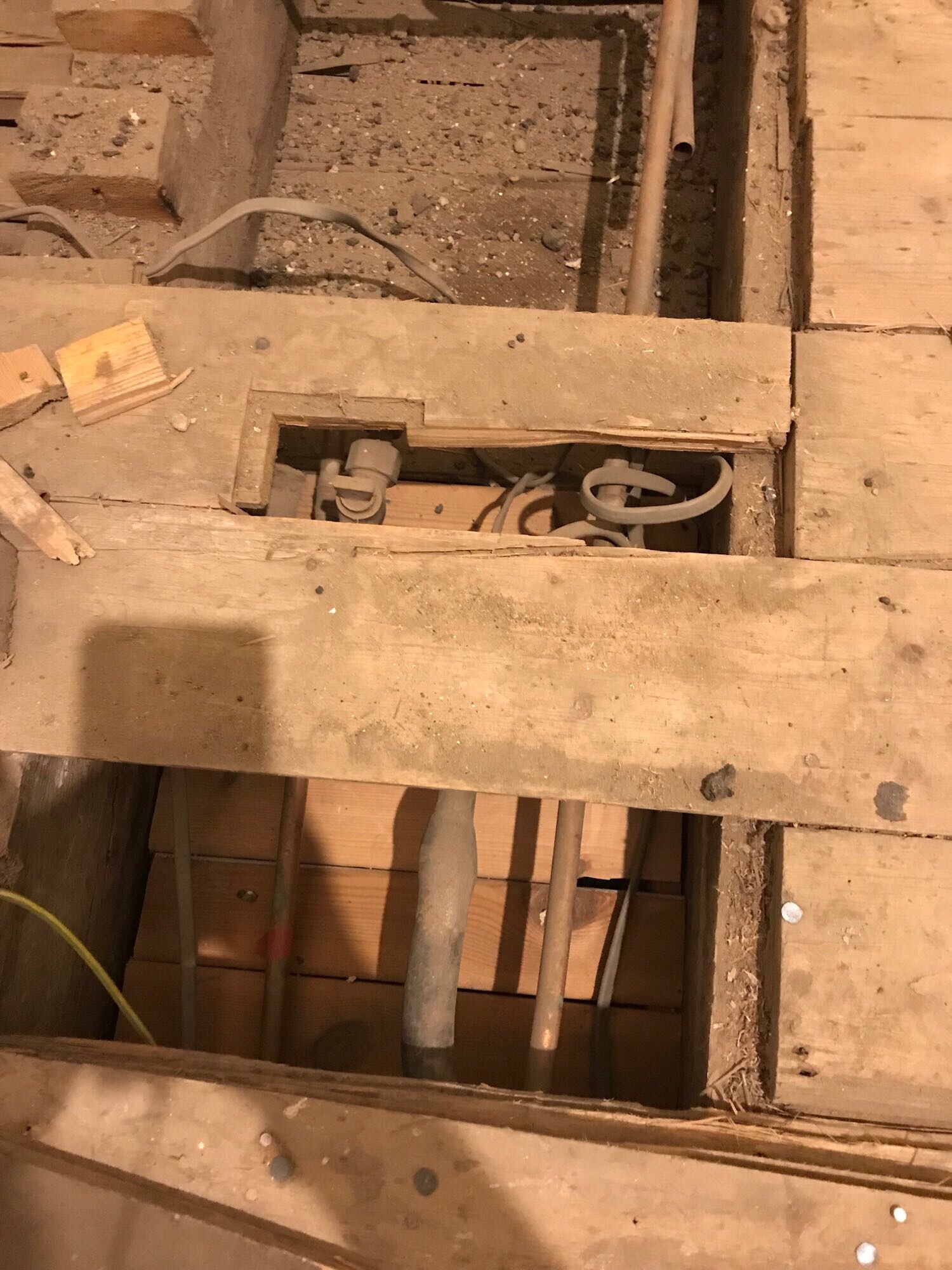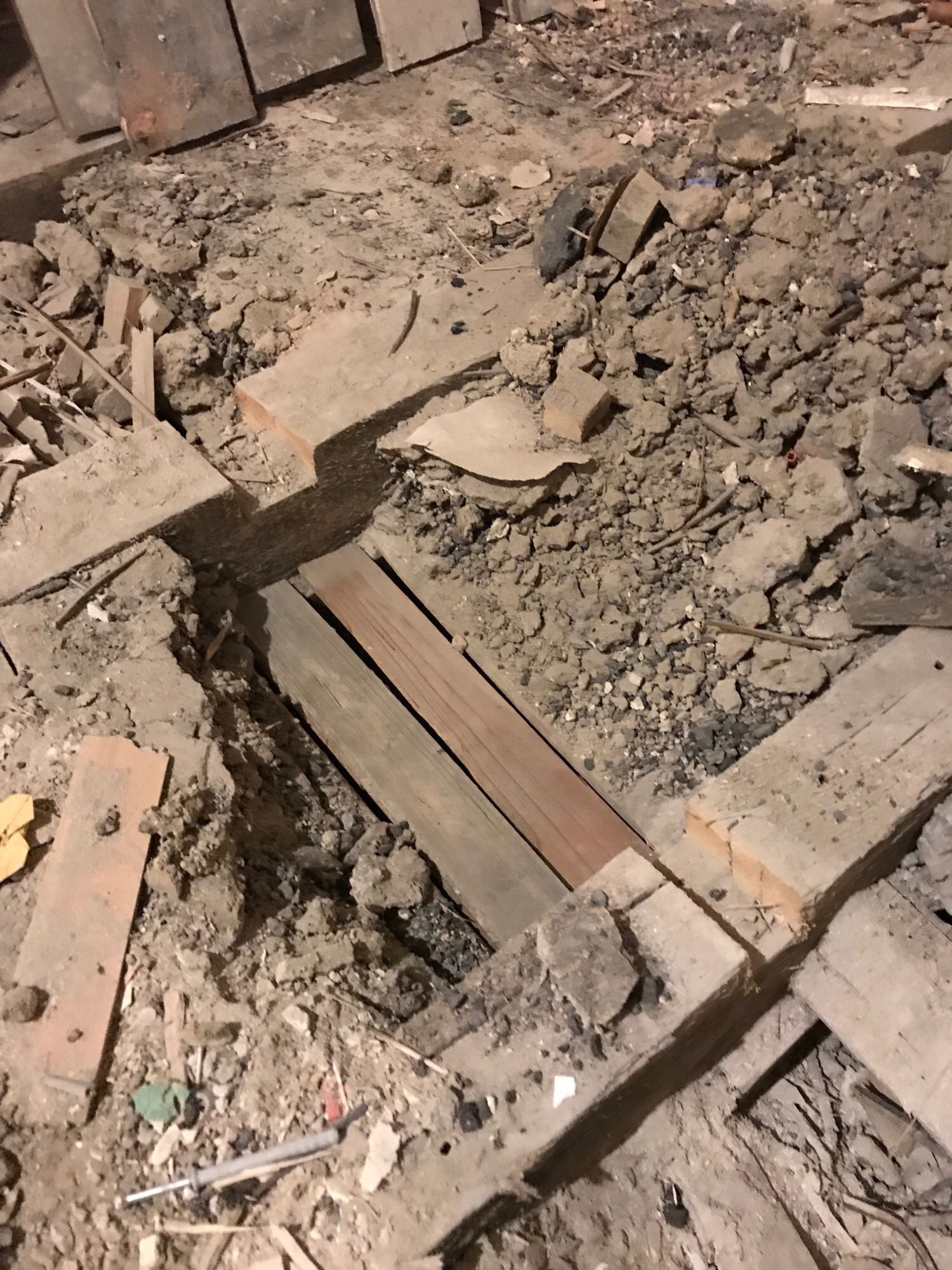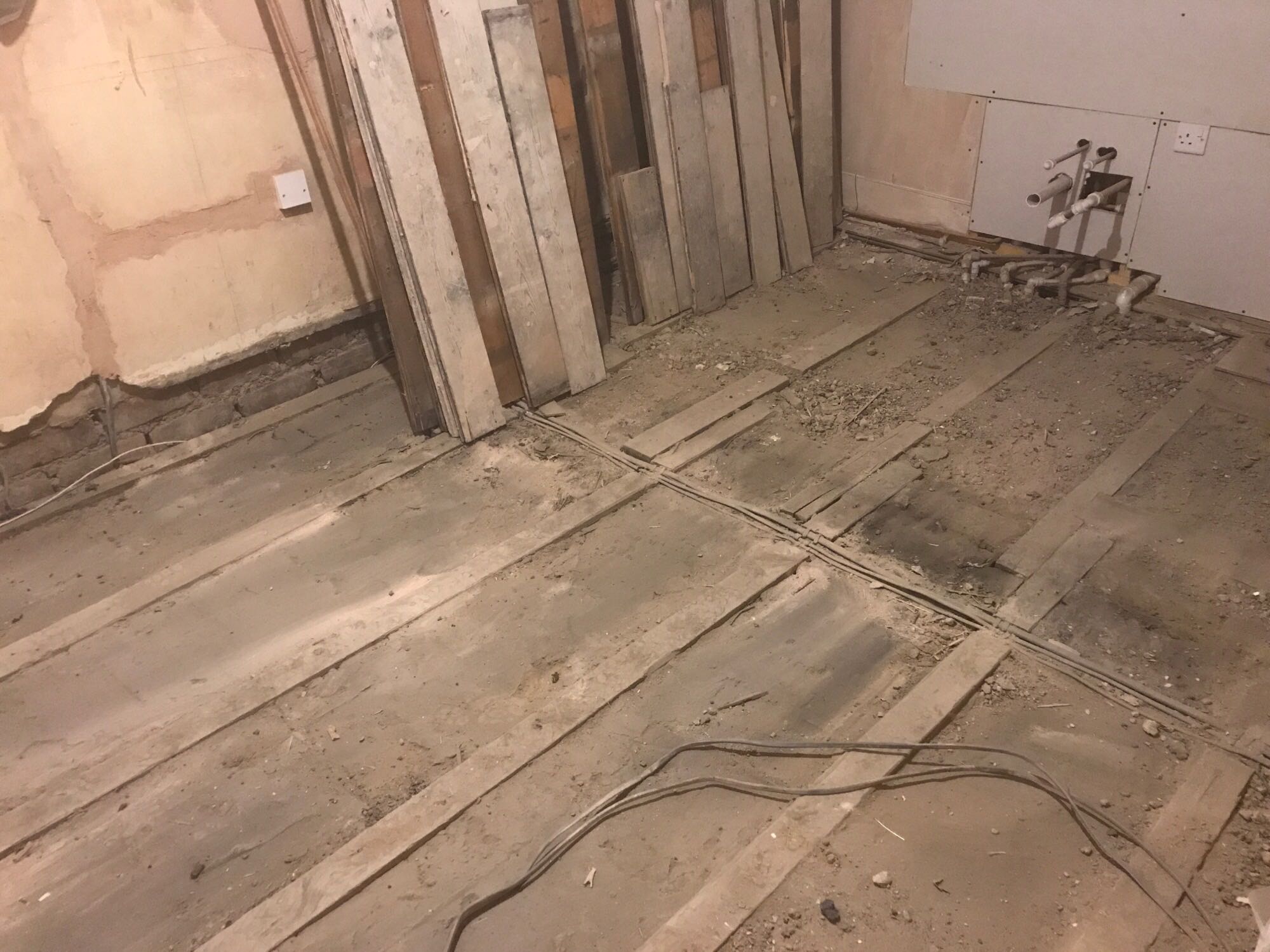In flats, soundproofing is important. There are loads of rules about it in the building standards, but having lived in a modern flat and now in our Victorian flat, I think they did a better job of it 120 years ago.
When it comes to soundproofing, mass is your friend. Lightweight materials won’t absorb and reduce the volume anywhere near as well as heavier ones. In truth, we’re talking about sound reduction rather than soundproofing, as unless you make soundproofing the overriding aim, practicalities of plumbing, electricity supplies, ventilation, and access will all reduce the effectiveness of the soundproofing.
There are two approaches to sound reduction in our flat- the first is lots and lots of bricks. Almost every one of our original walls, internal, party, and external, are made of bricks and mortar. The only stud wall I’ve found separated the old coal cupboard from the kitchen… not a divide where noise will be much of a problem!
The second sound reducing method is ash deafening, and it’s used to reduce the noise through ceilings and floors. Under all our floors, we have compacted ash from the fires of 1900’s Edinburgh, and a generous helping of building dust too. It’s a layer about 8cm deep, on average, and it rests on hundreds of little wooden boards suspended between the floor joists.

It’s very effective, but unfortunately, lots of it has been disturbed over the years by tradesmen, particularly when the central heating was installed. Any gaps compromise the whole thing for the room they’re in, as the sound gets through the breach in the deafening very easily.

I had to temporarily remove all the ash between two joists for the plumbing work we had done for our new kitchen, so I took the opportunity to repair the boards and reinstate the deafening where I had to lift the floorboards. In the new kitchen, we replaced the floor (as past wall removal left the boards somewhat patchy!) so I’ve done a lot of work there to make sure the deafening is intact throughout.
It’s pretty straightforward to do really, just very dusty and a bit unpleasant. You can do it without lifting many boards- I find every 4th was sufficient, and only boards which had been lifted before as thatose were the only places where it was disturbed. Stick on a good pair of rigger gloves, and pull out the ash so that you can replace any missing boards. Don’t miss the ash which may have fallen through the gaps onto the ceiling below.

The boards just rest on batons nailed to the joists on each side, so replace any missing ones with whatever wood you have available. Once they’re all there and no big gaps are left, put the ash back in and compress it as best you can, and you’re done. Apart from the full clean you’ll need to do of your flat!

If the ash has been thrown away, you can replace it with a modern equivalents, as ash doesn’t seem to easy to get these days. QuieTex is stocked by Jewson in 25kg bags, and I think I’ll be using that in the hallway, where there seems to be a fair bit missing. Building Control in Edinburgh also suggested fine sand, or used gypsum plaster dust.
